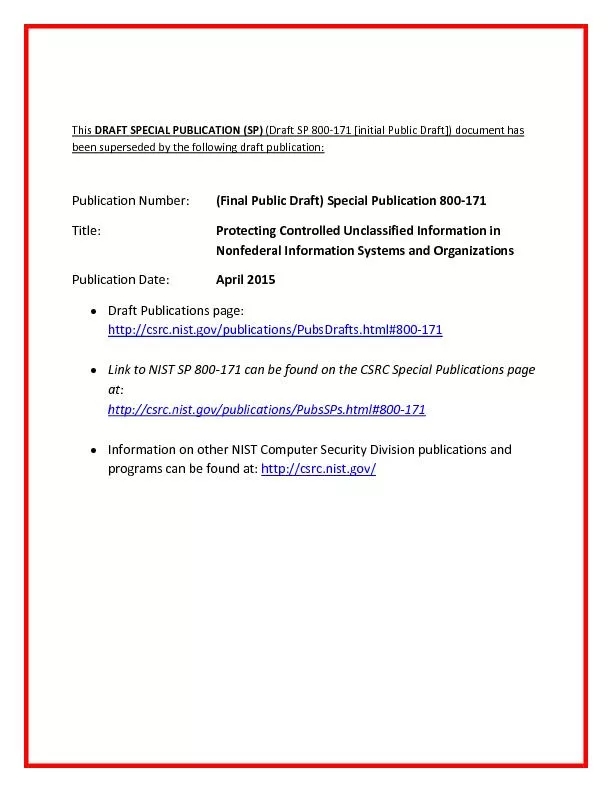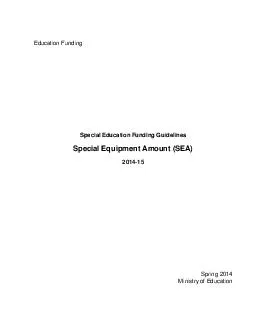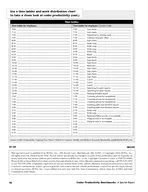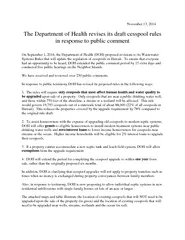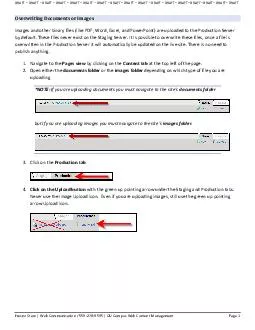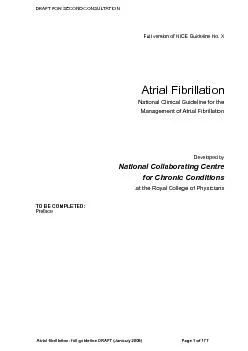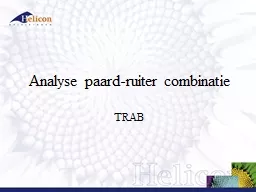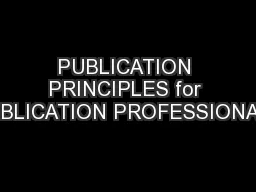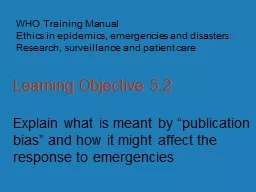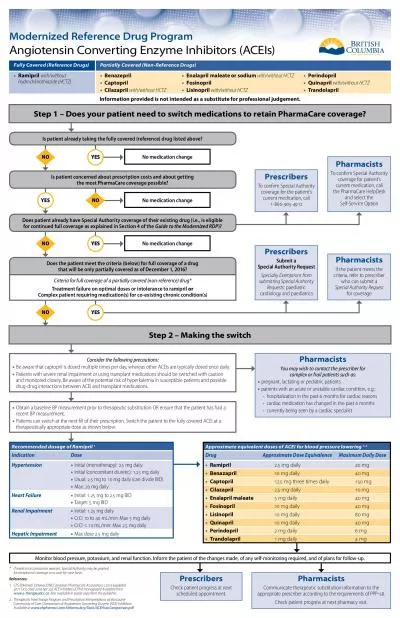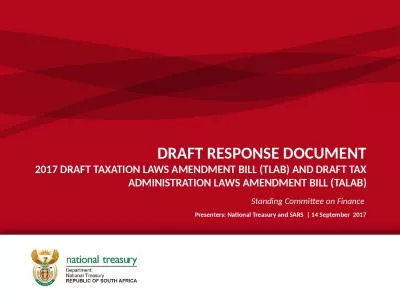PDF-is DRAFT SPECIAL PUBLICATION (SP)(Draft SP 800171 [initial Public Draf
Author : calandra-battersby | Published Date : 2016-11-27
been superseded by the following draft publication Publication Number Final Public Draft Special Publication 800TitleProtecting Controlled Unclassified Information
Presentation Embed Code
Download Presentation
Download Presentation The PPT/PDF document "is DRAFT SPECIAL PUBLICATION (SP)(Draft ..." is the property of its rightful owner. Permission is granted to download and print the materials on this website for personal, non-commercial use only, and to display it on your personal computer provided you do not modify the materials and that you retain all copyright notices contained in the materials. By downloading content from our website, you accept the terms of this agreement.
is DRAFT SPECIAL PUBLICATION (SP)(Draft SP 800171 [initial Public Draf: Transcript
Download Rules Of Document
"is DRAFT SPECIAL PUBLICATION (SP)(Draft SP 800171 [initial Public Draf"The content belongs to its owner. You may download and print it for personal use, without modification, and keep all copyright notices. By downloading, you agree to these terms.
Related Documents

